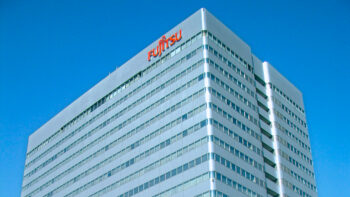The old image – a noisy, space-consuming printer in the corner of the office whose bane was a paper jam or a mysterious error code. A device whose main job was to transfer digital letters to paper and whose biggest worry was the perpetually running out of toner.
This image, thankfully, is increasingly becoming a thing of the past. The modern multifunctional device (MFP) is a quiet, intelligent and fully networked document management centre. Its role is no longer limited to simple printing. Today, it is a strategic tool that affects the productivity, security and operating costs of the entire company. In the age of digitalisation, hybrid working and growing cyber threats, ignoring its potential is a real loss for business.
To fully understand this change, it is worth looking at four key revolutions that are redefining the SME print market.
1. A revolution in the ownership model
The principle is simple: ‘Don’t buy the printer, buy the printed pages’. The traditional model, in which a company incurred a large, one-off capital expenditure (CAPEX) to purchase equipment, is giving way to flexible service models based on a predictable operating cost (OPEX).
In practice, SMEs mainly have two paths to choose from. The first is Managed Print Services (MPS), which is the comprehensive care of the entire print fleet. A third-party provider takes care of everything from device health monitoring to proactive maintenance to automatic supplies. The second option, which is becoming increasingly popular, is subscription (PaaS – Print-as-a-Service). The benefits for the SME sector are obvious: full cost predictability, no need to freeze capital at the start, constant access to the latest technology and, most importantly, relieving employees of the burden of equipment maintenance.
2. Hybrid operation
The hybrid model has become the new norm and the office is no longer the only place to perform duties. This change has fundamentally remodelled expectations of office technology. Printing today needs to be accessible from anywhere and from any device, just as easily and securely.
This is why features such as mobile printing, enabling jobs to be ordered directly from a smartphone, and deep integration with the cloud have become key. The ability to scan directly to and print from services such as Google Drive, OneDrive, Dropbox or SharePoint is now standard. This allows for seamless and uninterrupted work on documents, whether the employee is in the office, at home or on a business trip. Along with the software comes the hardware – there is a growing demand for compact but fully functional devices that can fit into a home office without compromising on performance.
3. Intelligent automation
Scanning a document today is only the beginning of the process. Modern multifunctional devices are powerful digitisation tools that can do much more than just create a digital copy of a piece of paper. At the heart of this revolution is OCR (Optical Character Recognition) technology, which turns a scanned image of an invoice or contract into fully editable and, most importantly, searchable text.
How does it work in practice? An employee scans an invoice and the device itself reads the key data from it – the amount, the contractor’s TIN, the account number and the due date – and then automatically sends it to the accounting system. Another example: a scanned contract is automatically named according to a predefined scheme, saved in the appropriate folder in the cloud and sent to the supervisor for approval. This is a real time-saver, reduces the risk of mistakes and is a huge step towards a paperless office.
4 Cybersecurity
The modern multifunction device is effectively a computer. It has its own operating system, hard drive and permanent internet connection. This makes it, like laptops or servers, capable of becoming the target of a hacking attack and a gateway to the entire corporate network.
The risk is twofold. Firstly, cybercriminals can steal data stored on the device – for example, scans of confidential contracts, financial reports or personal information. Secondly, they can exploit a vulnerability in the printer to gain access to the company’s internal network and attack other critical systems. Therefore, security features become an absolute priority when choosing a printing solution: encryption of data transmission, user authentication (via PIN or card) and regular software updates.
Time for strategic thinking
Shifting to a service model, support for hybrid working, intelligent automation and cyber security – these four pillars show how much the world of print has changed. Choosing the right solution is now a strategic decision. The question “how much does the device cost?” is giving way to: “How will this solution help us work more efficiently, securely and flexibly?”. Printing is no longer just an expense. It has become an integral part of a company’s digital ecosystem, and implementing it wisely can bring tangible business benefits.












